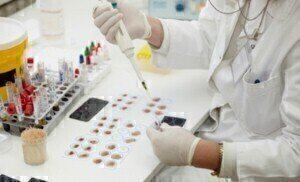GC, MDGC
What is a Response Factor?
Aug 08 2014
In chromatography, a response factor is defined as the ratio between the concentration of a compound being analysed and the response of the detector to that compound. A chromatogram will show a response from a detector as a peak. While there are several ways to quantify the peak, one of the most common is peak area, thus:
Response Factor = Peak Area / Concentration
It is important to remember that variations in a gas chromatography (GC) system and analysis methodology can be the cause of a deviation in the response factor.
Quantitative Analysis
Quantitative analysis is the determination of a compound’s concentration in a sample (analyte). Response factors are important when using GC for quantitative analysis. Therefore, for reproducibility in sample measurements, a method of eliminating variability in the response factor must be used. One of the easiest ways to eliminate variation in the response factor is to use relative response factors and an internal standard to calibrate the GC.
Relative Response Factors (RRFs)
The response factors calculated for each analyte are then used to establish the RRF between the two analytes thus:
Relative Response Factor (RRF) = Response Factor A / Response Factor B
The RRF can be used to calculate the unknown concentration of analyte A in the presence of a known concentration of analyte B using the following equation:
Concentration A = Peak area A / Peak area B x 1 / RRF x Concentration B
Using RRFs is beneficial when one of the samples is an internal standard - a calibration then allows multiple analyses to be run on different samples. A discussion of how RRFs are used in pharmaceutical R&D involving GC can be found in Rome and McIntyre (2013).
Internal Standard
An internal standard (IS) is a compound that is similar in physical and chemical characteristics to the sample being analysed. It must be inert to the sample and must not react with the sample or any solvent used to dilute or prepare it for GC.
Steps in a Quantitative Analysis
To determine the ratio of two compounds A and B in a sample, first the GC has to be calibrated. Once the calibration is complete, the sample can be analysed and the concentrations of A and B in the unknown sample determined. A simplified procedure is:
1) Prepare a calibration sample, which should contain compounds A and B at a known concentration. Add a known amount of IS. The same concentration of IS should be used in the calibration and analysis samples.
2) Introduce the calibration sample into the GC. Since the concentrations of A, B and IS are known, the results can be used to calculate the RRFs of A and B with respect to the IS thus:
RRFA = Response factor A / Response factor IS
RRFB = Response factor B / Response factor IS
3) Make up a sample of the unknown and a known concentration of IS and inject into the GC. After analysis, the results required are the peak areas of A, B and IS.
4) A simple calculation computes the concentration of A and B in the unknown.
a. Let the RRFA = 1.13 from step 2
b. Then using the Response Factor and RRF equations:
RRFA = 1.13 = Response factor A / Response factor IS
RRFA= (Peak Area A / Conc. A) / (Peak Area IS / Conc. IS)
c. The concentration of A can be determined by rearrangement of this equation:
Conc. A = Peak Area A x (Conc. IS / Peak Area IS) x (1 / 1.13)
d. Since we know the peak areas of A and IS (from step 3), and the concentration of IS used, we can calculate the concentration of A.
e. A similar calculation yields the concentration of B.
References
Rome, K. & McIntyre, A. (2012). Intelligent use of Relative Response Factors in Gas Chromatography-Flame Ionisation Detection. Chromatography Today, 52.
Digital Edition
Chromatography Today - Buyers' Guide 2022
October 2023
In This Edition Modern & Practical Applications - Accelerating ADC Development with Mass Spectrometry - Implementing High-Resolution Ion Mobility into Peptide Mapping Workflows Chromatogr...
View all digital editions
Events
May 05 2024 Seville, Spain
May 15 2024 Birmingham, UK
May 19 2024 Brno, Czech Republic
May 21 2024 Lagos, Nigeria
May 23 2024 Beijing, China














